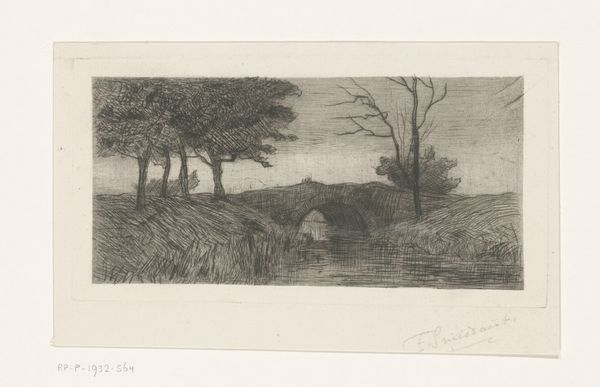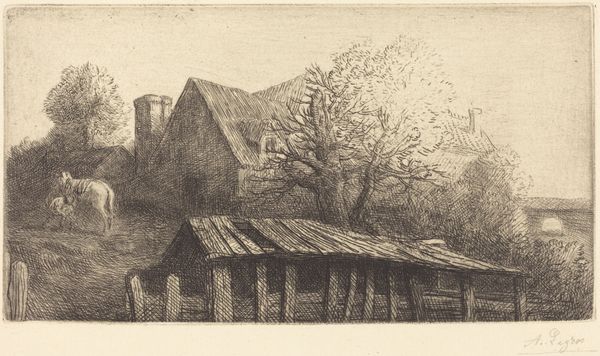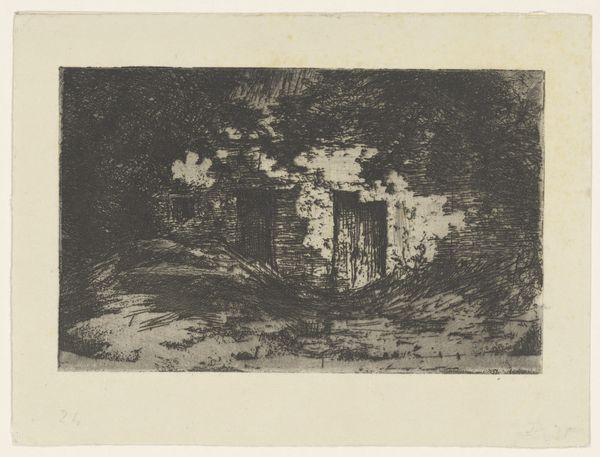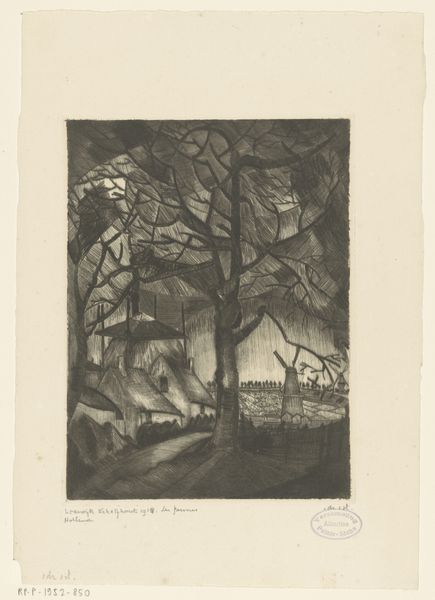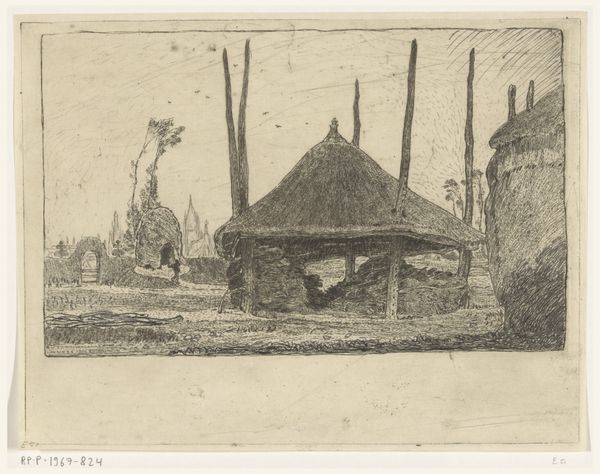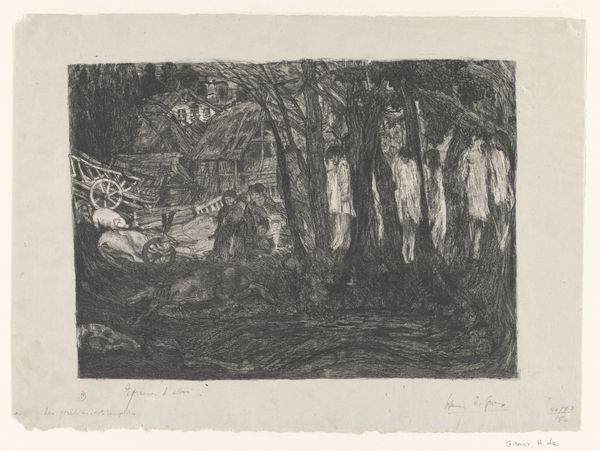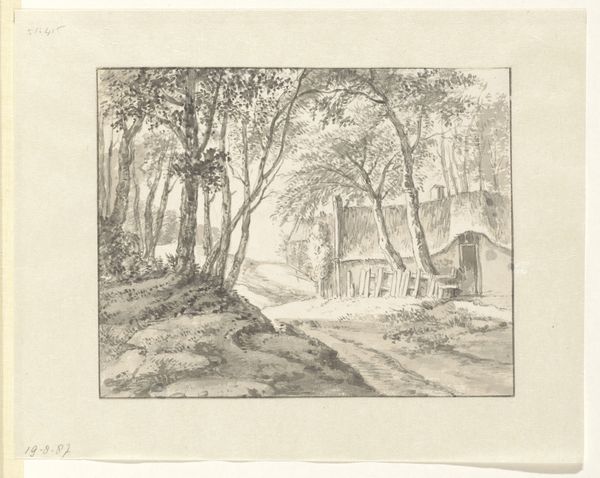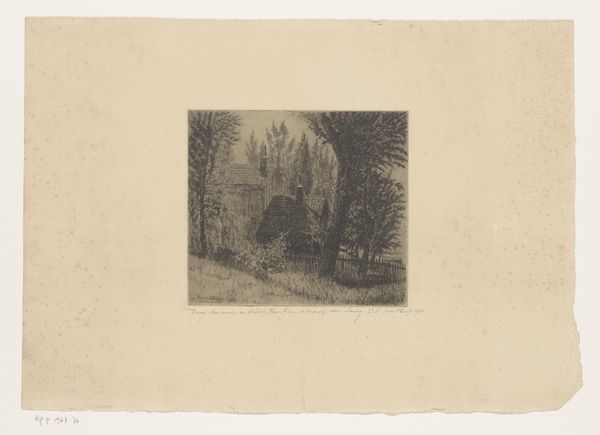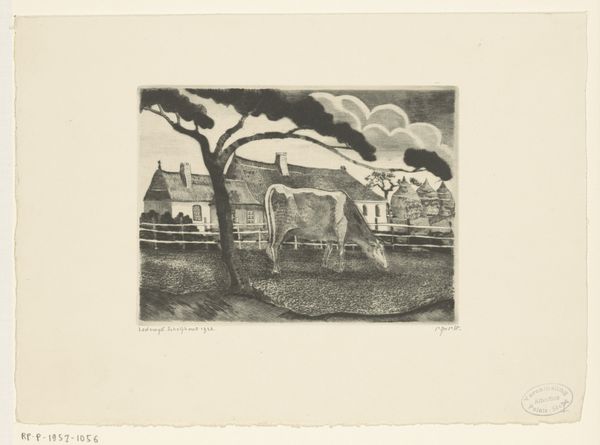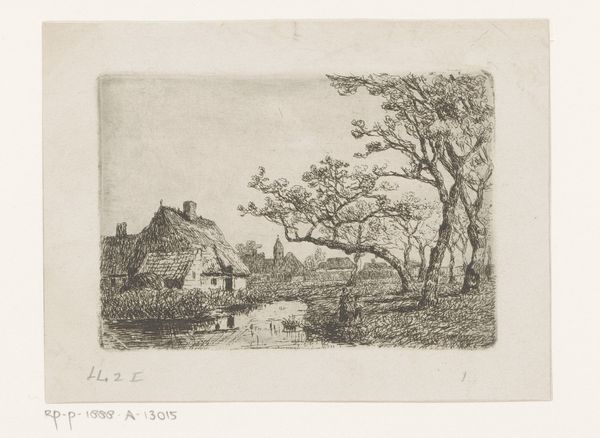
drawing, print, etching
#
tree
#
drawing
# print
#
impressionism
#
etching
#
landscape
Dimensions: height 122 mm, width 124 mm
Copyright: Rijks Museum: Open Domain
Curator: Willem Witsen created "Bomen bij een huis"—"Trees by a House"—sometime between 1882 and 1884. It’s currently held in the Rijksmuseum. This landscape, executed as an etching, immediately strikes me as...austere. Editor: Austere is an apt description. The stark, bare trees in the foreground create a screen, partially obscuring the building behind. Note how Witsen uses the etched lines to create depth, guiding our eye into the composition. The textures, rough and slightly blurred, further this feeling of seclusion. Curator: Indeed. The sense of seclusion resonates, especially considering Witsen's own privileged background and his connection to the Hague School, a movement associated with a certain bourgeois perspective. The image subtly questions this comfort by emphasizing the raw, unfiltered power of nature versus the shelter itself. Does the artist see nature threatening society or offering shelter? Editor: A fascinating question. Zooming in reveals the precise application of cross-hatching, especially in the tree trunks. Witsen understood the science of representation through layering. His method serves to reveal light in the very subtle ways the sky hits parts of the building's roof versus areas in the lower register. Curator: The etching medium itself becomes integral here. Think of the radical social and political upheaval in Europe at this time. Printmaking allowed artists to circulate images quickly and widely, and was thus more democratic and more accessible as compared to painting. For artists, that’s freedom. Editor: Witsen’s technical proficiency certainly allows for a range of visual effects, though, even beyond mass appeal. Curator: I agree, that is one function. I think this artwork has great appeal as the artist engages with notions of national identity, class division, and how power operated in 19th-century Dutch society. What is the nature of shelter? Who gets access? What happens when resources dry up or disappear? It's an artwork for all times. Editor: An engaging assessment! Witsen masterfully harnesses line and texture, crafting not merely a representation of trees and a house but an environment thick with quiet drama, rendered elegantly. Curator: His work has invited me to reconsider art’s function when critiquing historical forces and in influencing contemporary ones.
Comments
No comments
Be the first to comment and join the conversation on the ultimate creative platform.

